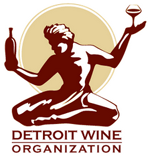The New Year is quickly approaching and bubbly wines are on every store shelf, so it seems appropriate to talk about them. In keeping with our pledge to explore the various wine producing regions in detail, we’re going to stick to examining bubbly produced in the Champagne region of northern France today (see map).
Those bubbly wines on the shelves of every grocery, drug and wine store come with widely varying price tags and very different names, so choosing can be difficult. The first lesson is simple (and something you’ve probably heard in the past) – as a general rule, only wines produced in the Champagne region of France may be called “Champagne”.
Other regions throughout the world produce sparkling wines – they just call them something different. So, the Italians produce spumante and prosecco; the Spanish, cava; Germans, sekt; Americans and New Zealanders, sparkling wine.
Now let’s focus on Champagne. Champagne is a region in the northern most part of France, where the climate is cooler – which means, if you recall from Course 3, that the grapes from the region are more likely to have a higher level of acidity and a crisper flavor than those grown in other regions of the country. Three grapes are used to produce Champagne – Pinot Noir, Pinot Meunier and Chardonnay. Still (non bubbly) wines produced from these grapes are blended together then fermented a second time in a bottle, trapping carbon dioxide and producing bubbles. (FYI- Blanc de Blanc is made from 100% Chardonnay, Blanc de Noir is made from 100% Pinot Noir). Strict guidelines that govern how this process takes place, called “Methode Champenoise”, ensure the quality of the product. (FYI – When a similar method is used outside the Champagne region, it’s called “Methode Traditionelle” or “Classic Method”).
Champagne is generally non-vintage or N.V. (a blend of wines from different years), but in the best years wineries will bottle vintage Champagne (100% of the grapes from a single year’s harvest) or cuvee (luxury wines which represent the rarest, finest bottlings of each Champagne house). Prices vary accordingly, as you’ve probably noticed. Non-vintage Champagnes are meant to be drunk within two to three years. About 80% of all Champagne produced is non-vintage.
Now what about the flavor? You may remember the sweet sticky taste of that glass of “pink champagne” your parents gave you as a treat on New Years Eve when you were a kid and never want to touch a glass of the bubbly again… but there is a lot more variety to Champagne than you might think. Flavors in Champagne tend to be soft and rich – like baked apples or warm bread and hazelnuts – and vary from very dry to very sweet. (As a point of comparison, California sparkling wines tend to taste much more of vivid fruit than Champagne because the grapes in California get much riper in the sun.)
If you look at the label of a Champagne bottle you’ll get an indication of its dryness or sweetness level. “Extra Brut” means totally dry; “Brut”-dry; “Extra Dry”-medium dry; “Sec”-slightly sweet; “Demi-Sec”-fairly sweet and “Doux”-really sweet.
Each Champagne House (brand) has it’s own style. If you like a light, elegant style, try Laurent-Perrier, Taittinger or Perrier Jouet. If your prefer medium bodied styles, try G.H. Mumm, Charles Heidsieck, Moet & Chandon, Pol Roger or Piper-Heidsieck. For a fuller body, try Louis Roederer, Bollinger, Krug or Veuve Clicquot.
Now – off to the celebrations! Talk to you in the new year…
Tidbits to Amaze and Delight your Friends
Bubbles are obviously the key to sparkling wine – but the size of those bubbles is what determines the quality of the wine. The best sparkling wines have tiny bubbles that float upward in a continuous stream from the bottom of the glass. If the bubbles are large and random, it’s probably a lesser-quality sparkler. The feel of the bubbles in your mouth is also important – finer wines have less aggressive bubbles. Variations in glassware also have a big impact on the flow of the bubbles and the taste of the wine – hence the need for a good tall flute.
Jevon is a board member


Leave A Comment